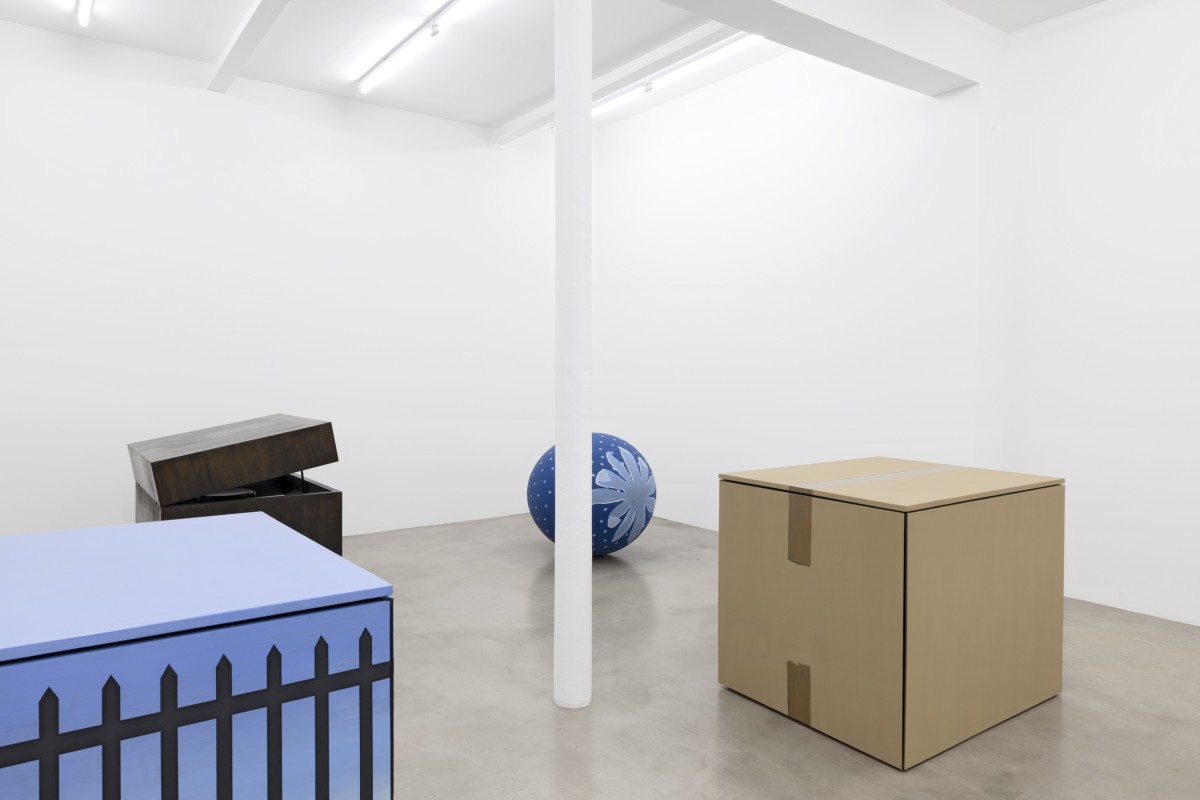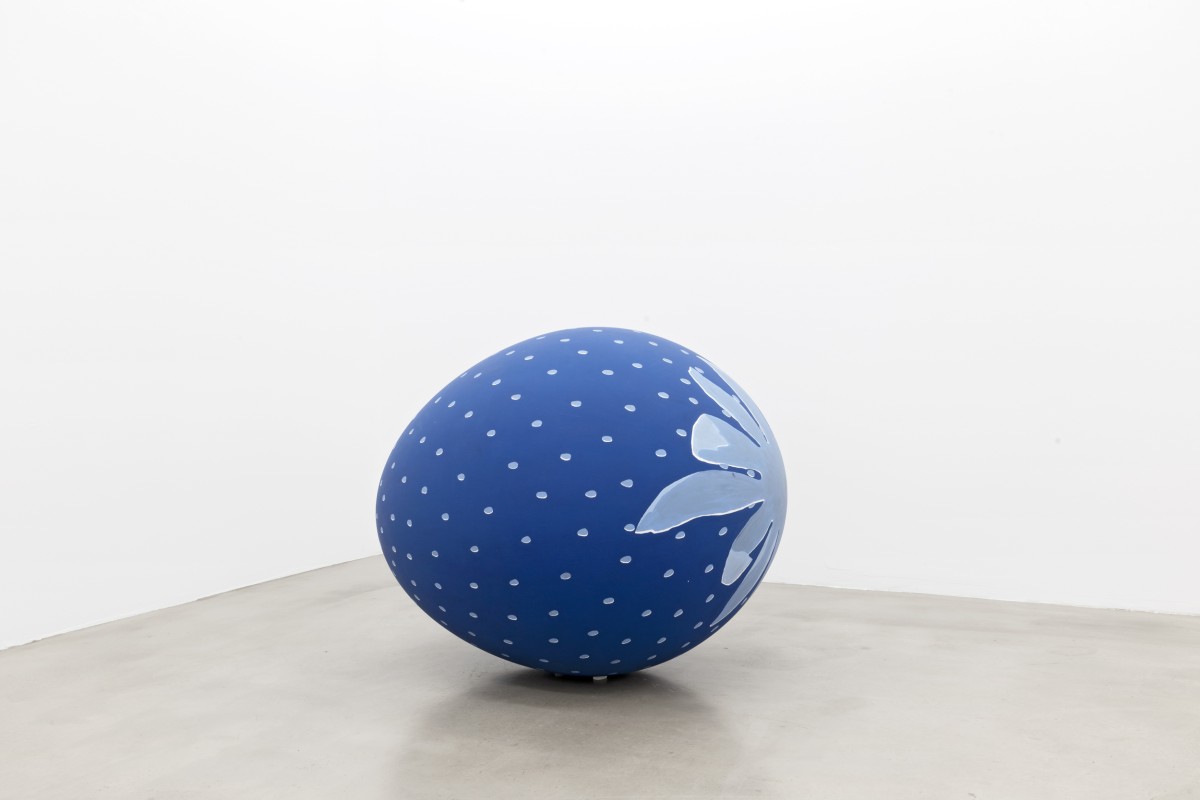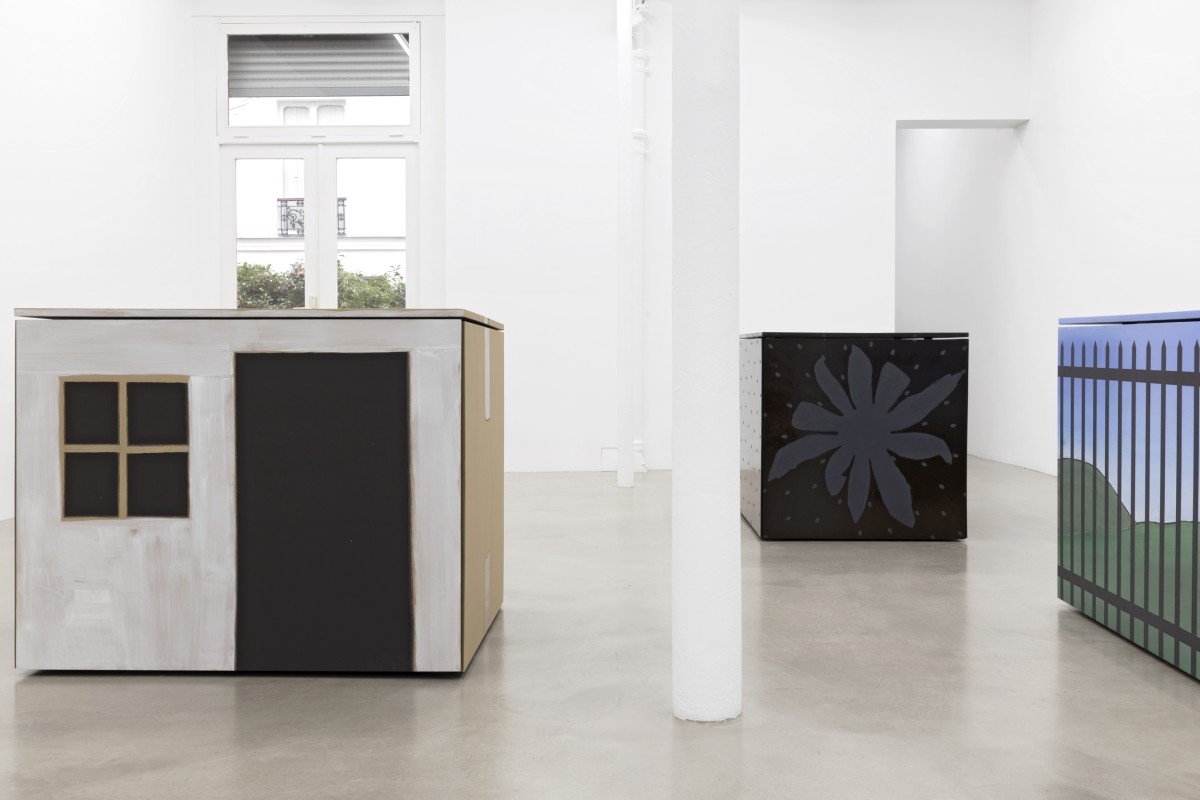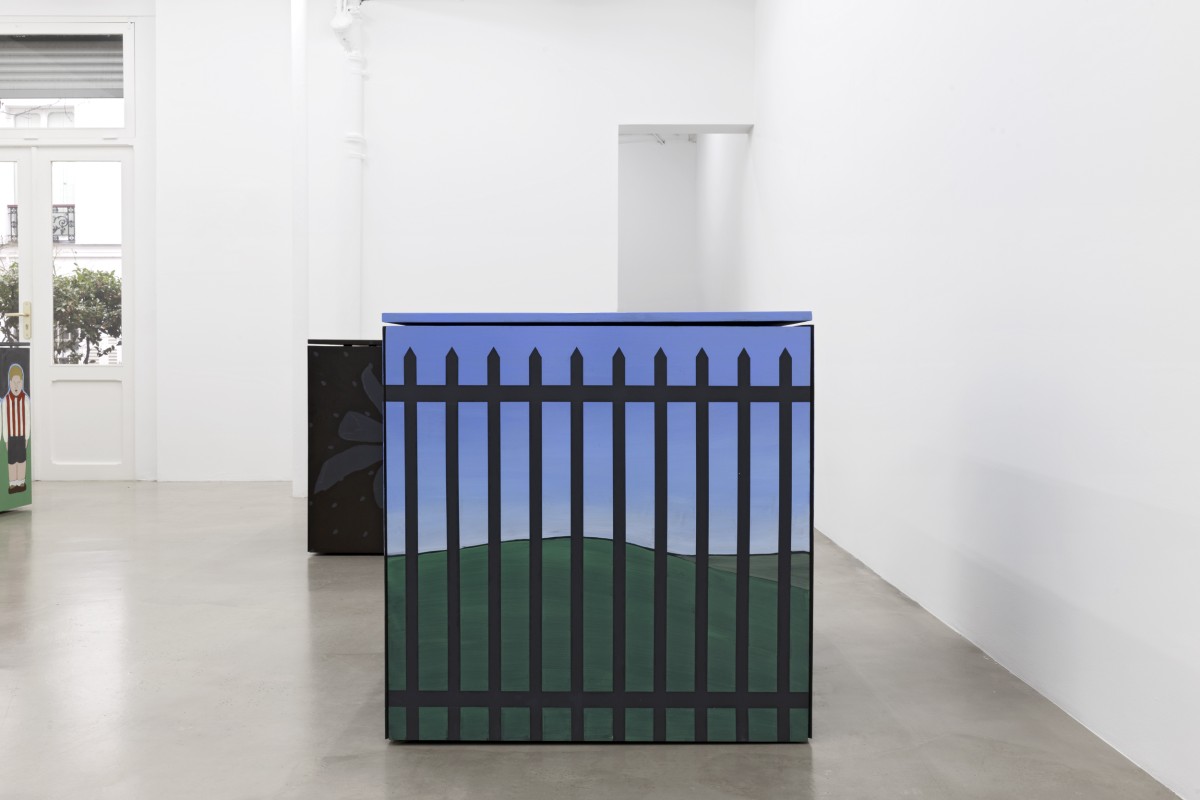At the back of Matthew Langan-Peck’s exhibition, an audio track Problème au feu rouge 2 plays on headphones from a large trunk. A man speaks from behind the wheel of his car during the workday, describing videos he’s seen recently on Instagram and TikTok, the kind where boyfriends take their girlfriends on a surprise trip to Starbucks or get down on one knee in front of Cinderella’s castle at Disneyworld. The narrator takes these scenes of on-screen, coupled happiness at face value. As he waits for the light to turn green, he speculates about how one might put a marriage proposal into words: “I want you and I to build a family together…” “I promise to love and take care of you until we are old.”
The brown trunk on which the headphones hang is propped open like a record player. Four other boxes in the gallery are constructed of panels that float slightly away from each other, so that we glimpse at their seams a hollow inside. These equally sized, geometric forms occupying the space call to mind Donald Judd’s 1970s plywood installations, or classic early Minimal sculptures, which were said to bring art down from an illusory realm onto the floor or out into the “real” realm in which we walk. But Langan-Peck’s painted boxes take on surreal qualities that confuse actual, representational, and interior space. The sky is fenced-in. A cardboard moving-box is dreamt to be a house. Neither egg nor strawberry, a blue shape balances between. The strawberry elsewhere returns as a brown box. The sporty boy, a motif from the artist’s last two shows at Edouard Montassut, lines the façade of one work, guarding the interiority behind him. And in Problème au feu rouge 2, we are placed inside the narrator’s car, but he’s alone. We can’t tell the driver’s personal fantasy of love apart from a received and generic image of human attachment. What’s flat and what is deep?
Across these works, something of the strangeness of what “content” is today is given shape. How content can circulate and insinuate and take at-once real and empty forms; how we make content but content also tries to make us.
Annie Ochmanek
 >
>
 >
>
 >
>
 >
>
 >
>
 >
>
 >
>
 >
>
 >
>
 >
>
 >
>
 >
>
 >
>
 >
>
 >
>
 >
>
 >
>
 >
>
 >
>
 >
>